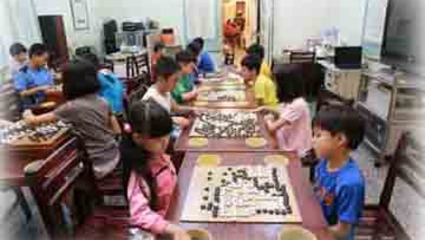台 灣 立 報 《 教 育 專 題 深 入 報 導 》 2013-07-11─立報—教育專題深入報導─智邦公益電子報
enews.url.com.tw · April 04,2014台 灣 立 報 《 教 育 專 題 深 入 報 導 》 2013-07-11
| ────────全 國 唯 一 教 育 專 業 報─────── |
| 台 灣 立 報 《 教 育 專 題 深 入 報 導》 2013-07-11 |
| 網址:http://www.lihpao.com/ |
| ★ ★ 本期目錄 ★ ★ |
| 【全球搶地】印度:徵收土地 政府手段粗暴 | 本報訊 |
策劃、編譯■劉耘 印度社會也面臨政府徵收土地作為工業用途的爭議。今年3月8日,印度婦女在國際婦女節上街爭取她們的權益,不過前一天,她們才與警方發生衝突,抗議政府自2007年起開始為南韓鋼業巨擘浦項鋼鐵(Posco Steel)建設耗資120億美元(約新台幣3千6百億元)的鋼鐵工廠。 數百位來自奧里薩邦的哥文普(Govindpur)和丁齊亞(Dhinkia)兩個村落的居民,抗議警方在執行徵收時的驅逐手段,抗議人群中男女老少都有,大部分是身體虛弱的女性;衝突中,有些印度婦女出言威脅,若警方不從她們的家園中撤離,她們將當眾脫衣以羞辱政府。 「警察攻擊民眾的手段令人譴責。這顯示了這個國家政府是怎麼對待一場民主運動。」反抗浦項鋼鐵的組織領導者薩胡(Abhay Sahoo)說。 不過消息指出,7月日聯合國人權事務高級專員辦事處(Office of the High Commissioner for Human Rights, OHCHR)已去函奧里薩邦的地方政府,警告他們在土地徵收的過程中違背人權,而地方政府得在1個月內作出回覆。 面對這項指控,地方政府回應:「我們沒有違背任何人權,這些為了浦項鋼鐵計畫所徵收的土地都是政府所有地,只不過先前被民眾侵占;從侵占者手中收回這些國有地並未觸法。」官員表示。 (綜合外電報導) |
|
| (回目錄) | |
| 【全球搶地】祕魯:守護水源 農民組隊自救 | 本報訊 |
策劃、編譯■劉耘 全球新自由主義擴張,政府默許跨國資本掠奪土地的情況,以非洲、亞洲、東南亞和拉丁美洲最為嚴重。各國政府不約而同皆以發展之名,吹捧土地開發後的農業或工業產值、就業機會或便利的基礎建設,而在南美洲祕魯的人民正試圖阻擋美國紐曼礦業公司的康加(Conga)開採計畫。 既使祕魯豐富的礦產產值占國內生產總值近4.9%,出口更占全國出口總值的40%,自稱「湖泊守護者」的農民巡守隊(Rondas Campesinas)依然自2012年開始,力抗美國紐曼礦業公司(Newmont)與祕魯夥伴公司布埃納文圖拉(Buenaventura)公司斥資50億美元(約新台幣1千5百億元)的康加金礦開採計畫,反對跨國公司為了在祕魯北部卡哈麥卡(Cajamarca)開採礦產而抽乾當地生活及畜牧賴以維生的湖水。 ▲祕魯一位安地斯山脈居民騎馬前往卡哈麥卡地區的皮洛湖,抗議美國紐曼礦業公司的康加開採計畫,圖攝於2013年6月17日。(圖文/路透) 「農民以往擔心的是瑣碎的犯罪事件,像是牛隻遭竊這樣的小事;但現在大家得保護我們的土地和水,免於這些資源被跨國企業奪走。」一位和農民巡守隊關係密切的社運人士桑傑士(Milton Sanchez)說。 40年前,這群農民在祕魯安地斯高山上組成了「農民巡守隊」,一開始的目的只是要在警政及司法體系腐敗的鄉野維持治安,打擊宵小;不過他們在1990年代早期壯大,逐漸成為偏遠地區自然資源爭議中舉足輕重的角色。 今年6月中旬,他們號召數千人前往皮洛湖抗議,要求祕魯總統烏馬拉(Ollanta Humala)取消政府批准、停止計畫,但烏馬拉7月3日晚間卻下令取消卡哈麥卡的集會自由,讓這個地區接下來數天陷入警民衝突,4人因此喪生。 雖然紐曼礦業公司極力向當地居民保證,他們會興建大型貯水設施,完善保存湖水以保障居民的用水來源,但居民仍擔心用水乾涸、污染等問題。 「政府已經不再能代表我們的心聲。」抗議民眾安齊(Cesar Angel)接受《路透》採訪時說:「但我們很堅強,我們的抗爭至死方休。」 (整理自《路透》) |
|
| (回目錄) | |
| 【全球搶地】象牙海岸:搶救雨林 可可豆農被犧牲 | 本報訊 |
策劃、編譯■劉耘 象牙海岸政府將數萬名可可農夫逐出保育林的行動,威脅著這個國家世界第一的可可豆出口量,也引發了侵害人權的控訴。 可可豆在這個曾被法國殖民的國家占了10%的經濟產出,但工業成長造成的環境成本也十分高。據歐盟統計,這個西非國家有3/4的森林在過去50年內消失,主要原因便是農業開墾,其中也包含可可豆的種植。 總統阿塔哈(Alassane Ouattara)領導的政府表示,對於逐步去除農業以拯救消逝的熱帶雨林所導致的經濟代價,他們已經做好準備,而安全部隊也已經開始剷平房舍、強制驅離農民。 「若是在美國,你無法想像民眾非法佔領中央公園,只因為他們宣稱自己沒有其他地方可以住,對吧?」政府發言人柯奈(Bruno Kone)說。 2010年阿塔哈勝選後,象牙海岸爆發短暫戰爭,而阿塔哈成功重建國家使他獲得許多世界大國的讚賞,這些大國也承諾資助數十億美元。 森林管理局表示,占地420萬公頃的保育林中,約有一半被非法侵占,而在經歷10年的停滯與政治動亂後,這樣的驅逐行動成為阿塔哈致力重申國家主權的方式之一。 另外,這個行動也符合阿塔哈想讓國家經濟脫離可可豆這個占了出口量40%的產業、使經濟發展更多元化的計畫。 此外,也看得出象牙海岸在開始與歐盟談判新的木材交易協定後,產生取消林業部門的壓力,即便非法砍伐原木的規模比可可豆農業來的小很多。 但是要將這些早已和家人居住在森林中幾十年的農民從231個林地保護區逐出,將使他們淪落到窮困潦倒的處境、激起動亂、甚至傷害整個經濟。 「每個人都仰賴可可豆維持生計。並不是每個人都能在城市中生存的。」一位可可豆農民巴布說道。他正站在一條滿是泥濘的小路上等待卡車,將他那些趁著軍隊摧毀房子前搶救出的家當載走。 ▲象牙海岸的尼格列森林中,一位遭驅逐的可可豆農夫站在他的家當旁,圖攝於2013年6月16日。(圖文/路透) 目前沒有數據,能指出象牙海岸共80萬名可可豆農民中,有多少人在森林保護區上生活和務農。上個月在尼格列森林進行第一次清除林中居民的行動時,森林管理局在軍隊進入之前清點人數,表示約有6千戶人家,也就是大約2萬5千人被驅逐。 行動開始的幾個星期內,這些預定要被驅逐的民眾開始指控安全部隊濫權,包含洗劫家戶、偷錢和可可豆,甚至出現民眾被強姦的案例,但政府否認這些指控。 《路透社》記者就在尼格列森林中的主要居住區,看見了林務局官員與重裝部隊用推土機剷平的房舍、商店和餐廳。 販賣鐵皮屋頂的安曼表示,他之前為無家可歸的鄰居提供住所,但士兵們半夜闖入,將兩個女人拖了出去。 「隔天早上我找到她們,她們告訴我士兵們強姦了她們。」他說。隔天,他的房子也被剷平了。 政府發言人柯奈否認這些指控。 「絕對沒有發生暴力或強姦案件。」他說:「如果民眾拒絕離開,或他們對我們的代表作出攻擊行為,我們擁有回應的權利。」 在一個充斥著武器的國家,很多大型農場的主人都擁有自己的武裝民兵部隊,情況不會那樣和平。 在象牙海岸2002年的政治動盪之前,可用來開墾新可可豆農場的土地就已經不足,但可可豆產量卻仍然增加,主要是來自森林開墾。 象牙海岸在2000年到2001年這一季產出了120萬公噸的可可豆。即便在戰事頻頻、土地與種族衝突不斷,以及走私進迦納的情況下,10年後象牙海岸的可可豆產量仍創下新高,達到150萬公噸。 由於移民政策寬鬆,大量農民湧入象牙海岸,其中很多是來自鄰國馬利和布吉納法索。這些移民付錢給當地村民非法購買土地;政府表示,這樣的情況在阿塔哈上任的前兩年都持續存在。 尼格列森林的非法農場每年產出6萬至7萬公噸的可可豆。 「這個國家很大一部分的可可豆產出是來自森林保留區……。那些保留區裡的農場都很新,同時也最具生產力。」在象牙海岸第二大港汕埠經營可可豆出口的貿易商表示。 熟悉政府計畫的工人們表示,那些長期非法占居的民眾只要居住在保護區外,政府就允許他們保有他們的農場,直到這些農場土地被重新種上各式闊葉及針葉樹木。 貿易商說,若農民在7、8月時沒辦法進入他們的農場並照顧作物,下個年度的主要作物產量將會首次受到衝擊。 但無論如何,政府的目標是停止一切在保留區的耕作,就算這樣的會對經濟成長造成傷害。 「如果這是必須付出的代價,我們已經準備好了。這絕不只是簡單的出口量問題;有些事相較之下更為重要。」柯奈說。(路透) The Ivory Coast is clearing tens of thousands of cocoa farmers from protected forests, threatening exports from the world's top grower and leading to complaints about human rights abuses. Cocoa represents about 10 percent of the former French colony's economic output but the environmental costs of the industry's growth have been high . The European Union estimates three-quarters of the West African country's forests, have disappeared in the past five decades, mainly due to farming including cocoa plantations(1). President Alassane Ouattara's government says it is prepared to pay the economic price of phasing agriculture out to save the dwindling(2) tropical forest and the security service s have started flattening houses and forcefully removing the farmers. "In America, you couldn't imagine people illegally occupying Central Park just because they say they have nowhere else to live, could you?" said government spokesman Bruno Kone. Ouattara has won praise and promise s of billions of dollars in funding from world powers for rebuilding Ivory Coast after a brief war that followed his 2010 election win . The forestry service says around half the 4.2 million hectares of protected forest reserves are illegally occupied and The evictions(3) form part of his effort s to reassert state authority after a decade of stagnation(4) and political turmoil. It also tallies with his plan to diversify the economy away from cocoa, which accounts for 40 percent of exports. There also appears to be pressure on Ivory Coast to clear up its forestry sector as it starts negotiations with the European Union over a new timber trade agreement although illegal logging operates on a much smaller scale than cocoa farming. But moving the farmers from the 231 reserves, some of whom have lived there with their families for decades, could leave them destitute(5) , stirring unrest as well as hurting the economy. "Everyone fed themselves through cocoa . Not everyone can make it in the city," said Abo Baboue, a cocoa farmer, waiting beside a muddy track for a truck to carry off what belongings he could salvage after soldiers destroyed his home. There are no figures for how many of Ivory Coast's 800,000 cocoa growers live and farm on protected land. In Niegre, the first forest to be cleared last month forestry agents counted 6,000 household s - around 25,000 people - before the army moved in, cutting short the headcount. Just weeks into the operation, those targeted have accusing security forces of abuse, including the looting of homes, stealing money and cocoa and, in some cases, rape, charges rejected by the government. In Baleko-Niegre, the main settlement inside the Niegre forest, Reuters journalists saw flattened homes, shops and restaurants after forestry officials, flanked by heavily armed soldiers, bulldoze d the area. Amadou Ama, who sold metal sheeting for roofs, said he had provided shelter to homeless neighbors' but soldiers broke down his door at night and dragged two women off. "The next morning I found them. They told me the soldiers had raped them," he said. A day later, his house was leveled too, he said. Kone, the government spokesman, rejected the accusations. "There have been no cases of rape or violence," he said. "If they refuse to leave, if they are aggressive towards our agents, we reserve the right to respond." In a country awash with weapons, many larger plantation owners head their own armed militias and may not go peacefully. Land available for new cocoa plantations ran out long before Ivory Coast's political crisis began in 2002, but output has continued to increase, largely from the forests. The country produced 1.2 million tonnes of cocoa during the 2000/2001 season. Despite war, conflicts over land and ethnicity, and smuggling into neighboring Ghana, production hit a record 1.5 million tonnes 10 years later. Farmers flooded in, many from neighboring Mali and Burkina Faso due to a loose immigration policy, often paying for land illegally sold by local villagers, a practice that the government says has continued during Ouattara's first two years in power. The illegal plantations in the Niegre forest produce between 60,000 and 70,000 tonnes of cocoa annually. "A large share of the cocoa produced in this country comes from the forest reserves ... The plantations inside the reserves are the youngest and most productive," said one cocoa exporter based in the country's second-largest port, San Pedro. Development workers familiar with the government's plans say long-term squatters will be allowed to keep to their plantations, as long as they live outside the reserve, until they are taken over by replanted hardwood and softwood trees. Traders say next year's main crop harvest could be the first to take a hit if farmers are not able to access and tend their plantations during July and August. But in any case , the government's goal is to stop farming in the reserves altogether, even if it hurts growth. "If that's the price to pay, we're ready to pay it. This is something that is more important than a simple question of tonnage," said Kone.Reuters 1.plantation(n.)農場 2.dwindle(v.)漸漸變小 3.eviction(n.)驅逐 4.stagnation(n.)停滯 5.destitute(a.)貧困的 |
|
| (回目錄) |
立報歡迎您投稿與指教。詳情請參投稿與聯絡立報 |
| 本電子報內容由台灣立報社提供 |
| 地址:台北縣新店市復興路43號 |
| 欲詳完整內容請訂閱立報 電話:02-86676655 傳真:02-82191213 訂報:02-86676655轉214 地址:台北縣新店市復興路43號1樓 每週一至週五出報,每份10元 |
| (回目錄) |















